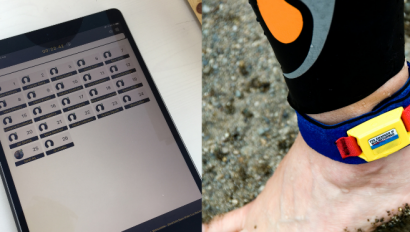Guide to Organizing a Low-Risk Endurance Race: 5 Simple Steps

Are you curious to start your own race? As with any business or event, it can be tough to get over the first hurdle and actually get started – especially if you have an unexisting or limited budget. But good news for you! With the right approach, it can be done with minimal risk and close-to-none capital investment.
In this guide, we’ll take you through five simple steps to help you organize a small, but memorable race that’s not only fun but also low-risk. Get ready to create your first event!
Step 1: Create a Fun Race Concept and Choose Your Distance
The first step in starting your endurance race is brainstorming and creating a unique race concept and also choosing a location. Consider factors such as terrain, obstacles, and themes that will make your event stand out. Once you’ve settled on a concept, choose an appropriate distance for your race. Whether it’s a 5K, 10K, or longer, make sure it will be manageable for you and a few volunteers to oversee and mark. It is usually easier to start with a shorter distance, such as 5 or 10 km running (the course you need to mark is shorter and it is usually easier to get approvals). If you choose a race in terrain, a trail race, it will probably be easier to manage for you as the pace will be slower.
Another important part of step one is to check if you need any permits or approvals to host your race. Read this handy guide to find out. Sometimes, you may have to pay a fee but it is usually not a significant amount.
Step 2: Open Registration and Communicate It
Once you’ve defined your race, it’s time to open registrations. Utilize online platforms and social media to spread the word. Choose an attractive and user-friendly registration platform to encourage early sign-ups. Clearly communicate all essential information, including race details, registration fees, and any perks participants can expect. A seamless registration process will set a positive tone for your event and make the administration work easier and faster for you.
Step 3: Recruit Family and Friends to Help You During Race Day
Getting volunteers for an endurance race can be a monumental task, so enlist the support of family and friends. Having a reliable team will help with various aspects such as registration, course management, and participant guidance on race day. Their assistance ensures smoother operations and reduces the risk of unforeseen challenges. You will need at least 1 or 2 people as timekeepers and probably one more person to help out with registration and start/finish area setup.
Step 4: Download RaceID Timing and Practice Timekeeping
Accurate timing is crucial for any endurance race. Download the RaceID Timing App, a user-friendly tool designed to make timekeeping hassle-free and cheap. By using the timing app, you will save thousands on not having to purchase or hire chip timing equipment. Practice using the app to familiarize yourself with its features and ensure precision during the event. Reliable timing contributes to a professional race atmosphere and enhances the overall participant experience. With this app, you will also get automatic live results online – so one less thing to worry about.
The app subscription is only €199 for a whole year, and it’s the only large sum you need to pay for the race if you set it up this way.
Step 5: Make Your Race Day Great (with RaceID Timing and Results)
On race day, focus on creating a positive and enjoyable experience for participants. With RaceID Timing, you can efficiently manage start and finish times and provide quick and accurate results. The results will be available immediately. Make sure you share them, through social media or at the event venue, to build excitement and satisfaction among participants. A well-executed race day ensures a memorable experience for everyone involved.
Summary of Costs for a simple race:
Permits: €50-100
Timing App: €199
Registration and payment: €0 (include/ marek up your registration fee)
Optional: medals, t-shirts, food (€5-10 per participant)
Let’s say you’re able to get 100 participants, and you set a very affordable registration fee of €22 since they will not get any medals or merchandise.
You will earn: €2199
Minus your costs: €1901
In other words, to break this endeavor even, you would only have to get 14 participants. I’m sure you would be able to do that!
In conclusion, starting a new endurance race can seem difficult at first glance, but by following these five simple steps, you can minimize risks and create a memorable event that will make several people happy and encourage them to exercise and be healthier.
From conceptualizing the race to utilizing technology like RaceID Timing, careful planning and execution will contribute to a successful and enjoyable experience for you, your family/friends and your participants.
Get ready to cross the finish line of your race-organizing journey with confidence!


